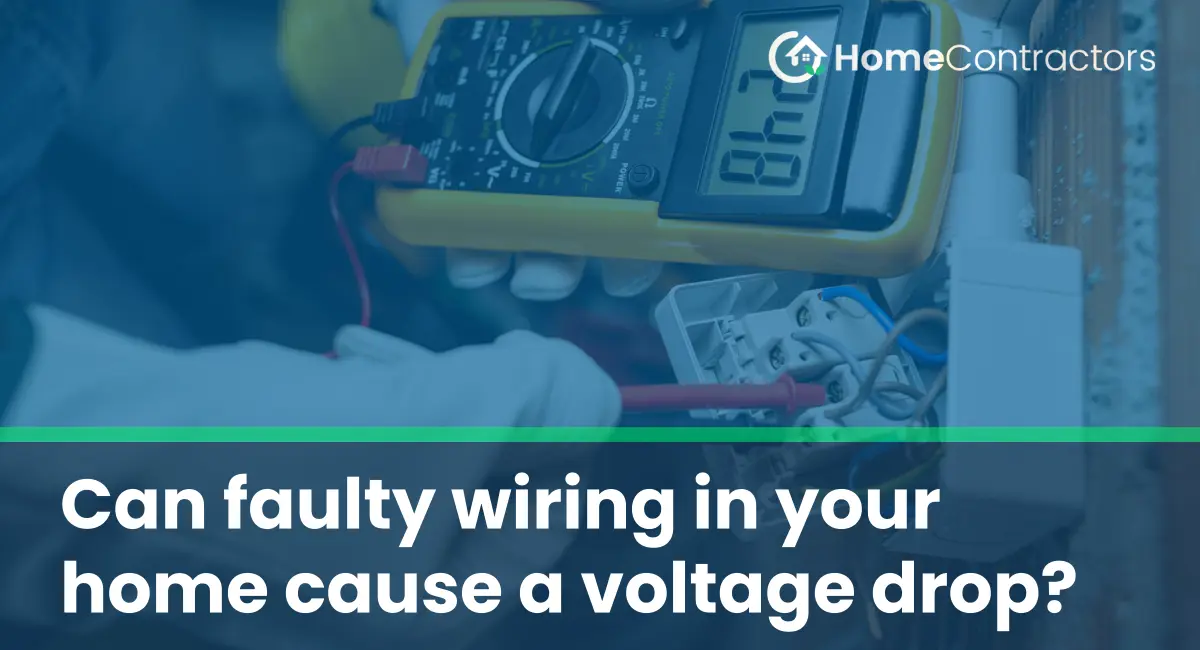Faulty wiring can cause a variety of problems in your home, including voltage drops. Voltage drop refers to the reduction in electrical potential between the power source and the load caused by impedance in the wiring system. When voltage drops occur, it can lead to flickering lights, electrical device malfunctions, and even potential fire hazards. In this article, we will explore how faulty wiring can cause voltage drops and discuss the importance of addressing this issue promptly.
Understanding Voltage Drop
Before delving into how faulty wiring contributes to voltage drops, it is essential to understand what voltage drop is and how it affects electrical systems. Voltage drop occurs due to the natural resistance inherent in electrical conductors. As electricity travels through wires, it encounters resistance, causing the voltage level to decrease as it reaches the load.
Voltage drop is influenced by various factors, including the length and diameter of the wire, the amount of current passing through it, and the overall quality and condition of the wiring. Excessive voltage drops can lead to various problems, such as reduced appliance performance, overheating, and potential damage to electrical components.
How Faulty Wiring Causes Voltage Drops
1. Loose or Damaged Connections
One common cause of voltage drops is loose or damaged electrical connections. Over time, electrical connections can become loose due to normal wear and tear or improper installation. Loose connections increase resistance in the circuit, leading to voltage drops. Additionally, damaged or frayed wiring can also result in poor conductivity and voltage fluctuations.
2. Undersized Wiring
Using undersized or inadequate wiring for the electrical load is another factor that can contribute to voltage drops. When the wire’s diameter is insufficient to carry the required current, it creates higher resistance, leading to reduced voltage levels. This is particularly common in older homes where outdated wiring may not be capable of handling modern electrical demands.
3. Overloaded Circuits
Overloading circuits by connecting too many devices to a single circuit can also cause voltage drops. In such cases, the excessive demand for current exceeds the capacity of the wiring, resulting in a decrease in voltage levels. Overloaded circuits pose a significant fire hazard and should be addressed immediately.
4. Corroded or Deteriorated Wiring
Corrosion or deterioration of electrical wiring can also contribute to voltage drops. Exposure to moisture, pests, or environmental factors can cause wires to corrode or degrade over time. Corroded wiring increases resistance and hampers the flow of electricity, resulting in voltage drops.
Effects of Voltage Drops
Voltage drops can have several detrimental effects in your home electrical system, including:
1. Flickering Lights
One of the most noticeable effects of voltage drops is flickering lights. When the voltage supplied to lighting fixtures decreases, the lights may dim, flicker, or even fail to turn on altogether.
2. Electrical Device Malfunctions
Voltage drops can significantly impact electrical devices and appliances. Devices that require a constant voltage level to operate efficiently, such as computers or refrigerators, may malfunction or fail to function altogether when voltage drops occur.
3. Overheating Equipment
When voltage drops occur, electrical equipment may compensate by drawing additional current. This increased current can lead to overheating, which poses a fire hazard and can cause damage to the equipment.
Faulty wiring in your home can indeed cause voltage drops, leading to various electrical issues and potential safety hazards. Loose or damaged connections, undersized wiring, overloaded circuits, and corroded or deteriorated wiring are some common culprits for voltage drops. It is essential to address any signs of voltage drops promptly to ensure the safety and efficiency of your electrical system. If you suspect faulty wiring, it is recommended to consult a licensed electrician to assess and rectify the issue to prevent further problems. Remember, a well-maintained and properly installed electrical system is crucial for a safe and functional home.
